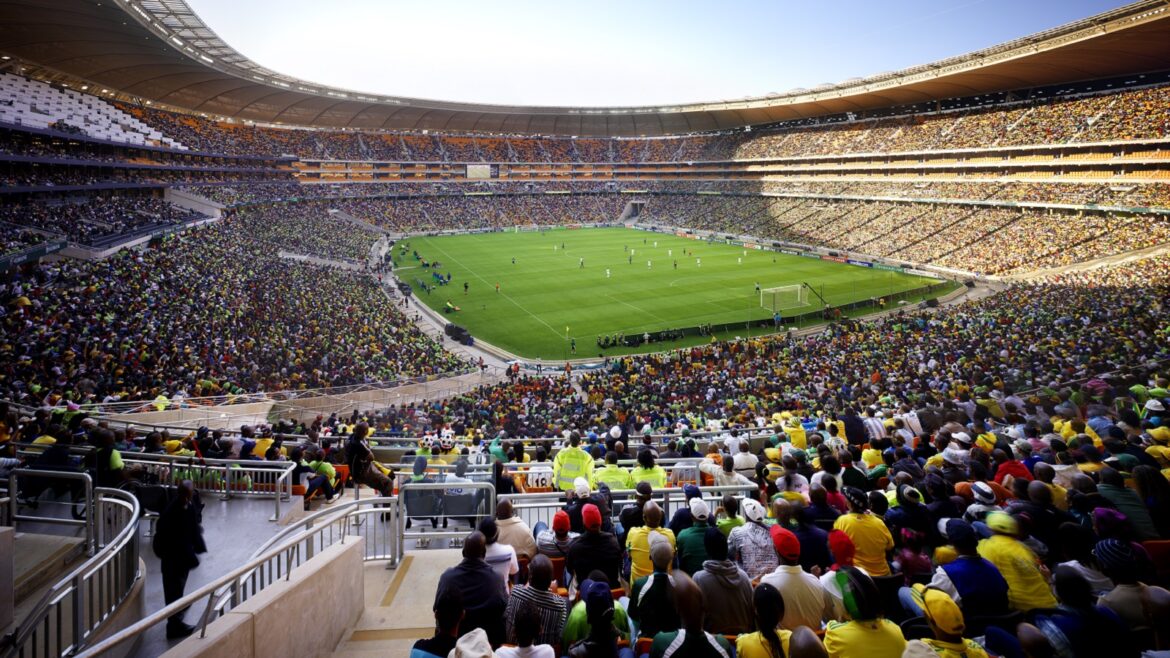Nearly half of the African nations participating in the World Cup qualifiers this June were forced to host their matches in their own stadiums, as these facilities did not meet international standards.
The Confederation of African Football (CAF) and FIFA have taken a firm stance on subpar facilities, pressuring countries to improve pitch conditions and other infrastructure to meet the requirements for hosting international games.
There will be a minimum of nine African teams in the expanded 48-team tournament, co-hosted by Canada, Mexico, and the U.S.A. This is a significant increase from the five African teams that participated in the last World Cup in Qatar. However, 17 of these teams were unable to use their home stadiums for the qualifiers due to inadequate facilities.
For many who can witness the last World Cup finals in the United States 30 years ago, the image of the late Rashidi Yekini celebrating the first Nigerian goal at the World Cup against Bulgaria, grabbing and shaking the net at the stadium in Dallas, Texas, remains iconic. Yekini, who died at the early age of 49, was one of the all time top goal scorers at the African Cup of Nations, with 13 goals at the tournament between 1984 and 1994.

Nigeria’s Rashidi Yekini grabs the net in celebration after scoring his country’s first-ever goal in a soccer World Cup in Dallas, Texas, in 1994. (Getty Images)
Yekini played in different European leagues including the Portuguese Premier League, where he finished as the top scorer. After he took a decision in 2005 that had never happened before at the time, to return to his country Nigeria and end his club career there.
In his interview he said: “Sincerely speaking, it’s not easy to come back home after playing European football at a high level,” he told a local media Newsline Magazine, “I have pretended that I have not played football in europe, in order to cope with the poor facilities at home.”
For the unassuming Yekini, returning to the Nigeria championship that first put him on the path to fame, in order to help restore its lost prestige and profile, was something that gave him great pleasure.
Confederation of African Football (CAF), with the support of FIFA, has taken a firm stance on inadequate facilities over the last two years, aiming to compel countries to improve pitch conditions and other amenities like changing rooms and stadium lighting.
Although this has prompted some African countries to renovate their stadiums, many have been slow to act, losing their home advantage for competitive qualifiers as a result.
Seventeen of the 43 countries with scheduled home games in the qualification for the 2026 World Cup this June were barred from using their own stadiums because they did not meet the required standards.
This is the largest expansion the World Cup has ever seen. The tournament started with 13 to 16 nations in 1930, 1934, 1938, and 1950. From 1954 onwards, it featured 16 teams until it increased to 24 for the 1982 World Cup in Spain, which Italy won. It then expanded to 32 teams for the 1998 World Cup in France, where the host country won its first title against Brazil, the only team that has never missed any World Cup finals. The move from 32 to 48 teams is a 50% increase, making it challenging for any single country to host the event due to the venues and infrastructure required.
The move from 32 to 48 teams is a 50% increase, and will make it difficult for any one country to host the event as the venues and infrastructure required.

